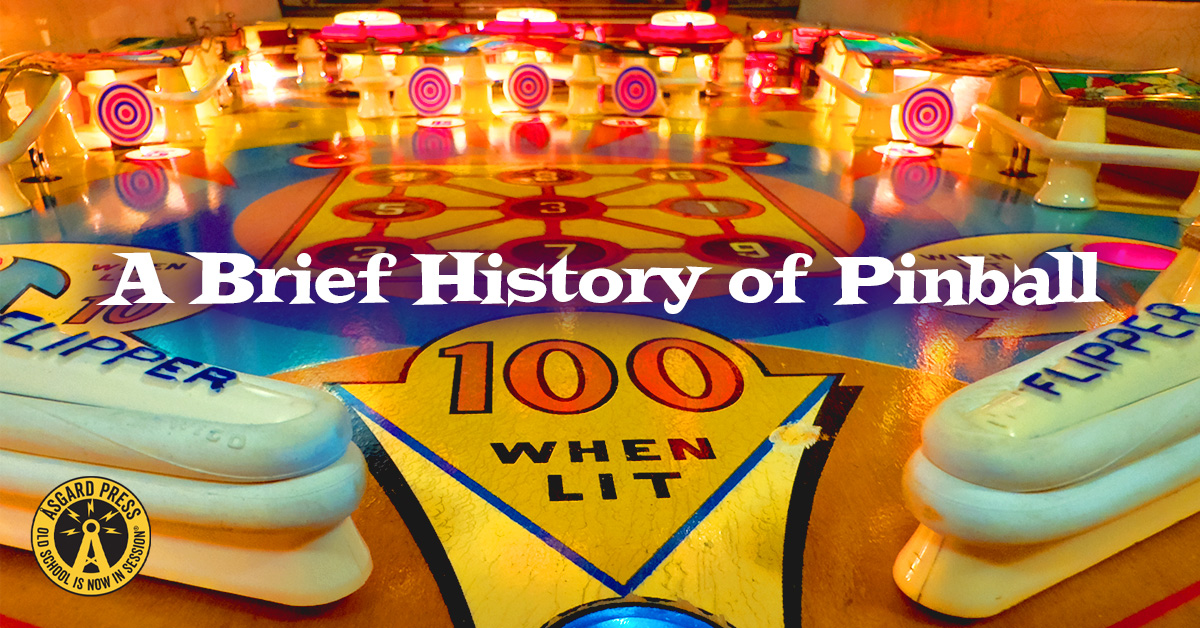Introduction to the History of Pinball
Pinball is one of the oldest and most iconic arcade games out there. It’s a piece of gaming history with roots that can be traced back to before we even had arcades. But if you consider pinball to be a relic of the past, we urge you to reconsider. Pinball is still a wildly popular game today with its plethora of competitions, arcade prominence, and spin off games. If you’ve been thinking about pinball lately or have had the urge to play, keep reading, as we’ll dive into a complete history of pinball.

Olimar, CC BY-SA 4.0 <https://creativecommons.org/licenses/by-sa/4.0>, via Wikimedia Commons
Pre-Modern Pinball
The earliest version of pinball can be traced back to lawn games in Europe, where balls and stones were rolled into holes. This eventually led to indoor parlor versions of these games called Bagatelle tables, which were invented by the French in the late 18th century. Players would use a stick to propel balls up an incline, which then bounced off various pins and eventually landed in pockets that each had different score values attached to them. These early machines did not have flippers or use electricity and were extremely dependent on luck.
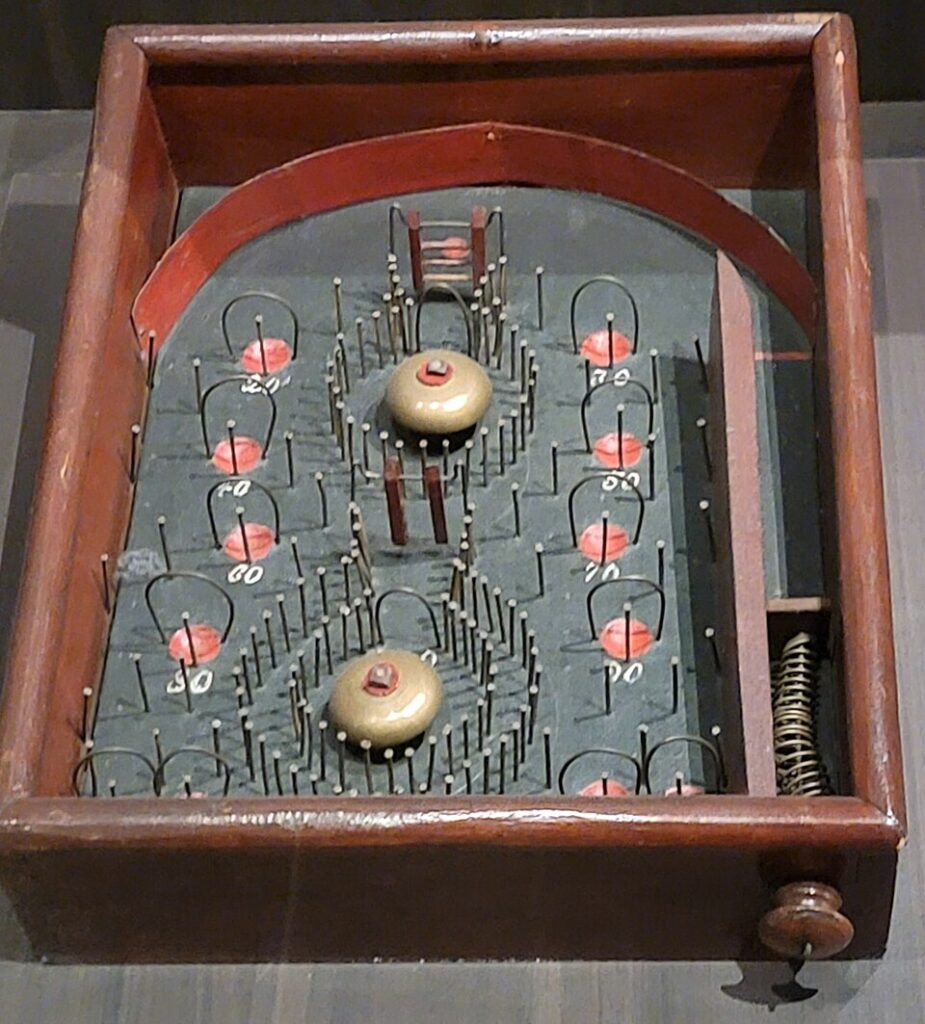
Votpuske, CC BY 4.0 https://creativecommons.org/licenses/by/4.0, via Wikimedia Commons
In 1871, British inventor Montague Redgrave was granted a U.S. Patent for his “Improvements in Bagatelle.” The most notable change from the original game was the addition of a coiled spring and plunger used to launch the balls, which is what modern pinball uses. Redgrave also shrank the size of the game to fit better on tables and counters and changed the balls to small marbles.
The First Modern Pinball Machines
It wouldn’t be until 1931 when the first coin-operated and modern looking pinball machine was invented. It was created by Automatic Industries, who named it a whiffle board. Later that year, pinball legend David Gottlieb created his Baffle Ball machine, quickly becoming a massive hit, and leading to a pinball craze as the game cheaply entertained millions of people during the Great Depression.
Soon after in 1932, Raymond Moloney created the Ballyhoo, a notably more challenging game than Baffle Ball, featuring ten pockets and a larger playing field. Another hit around the same time was Bingo Novelty’s Bingo machine. Funnily enough, as you may have noticed, none of these machines were actually called pinball. That term would not be coined until 1936.
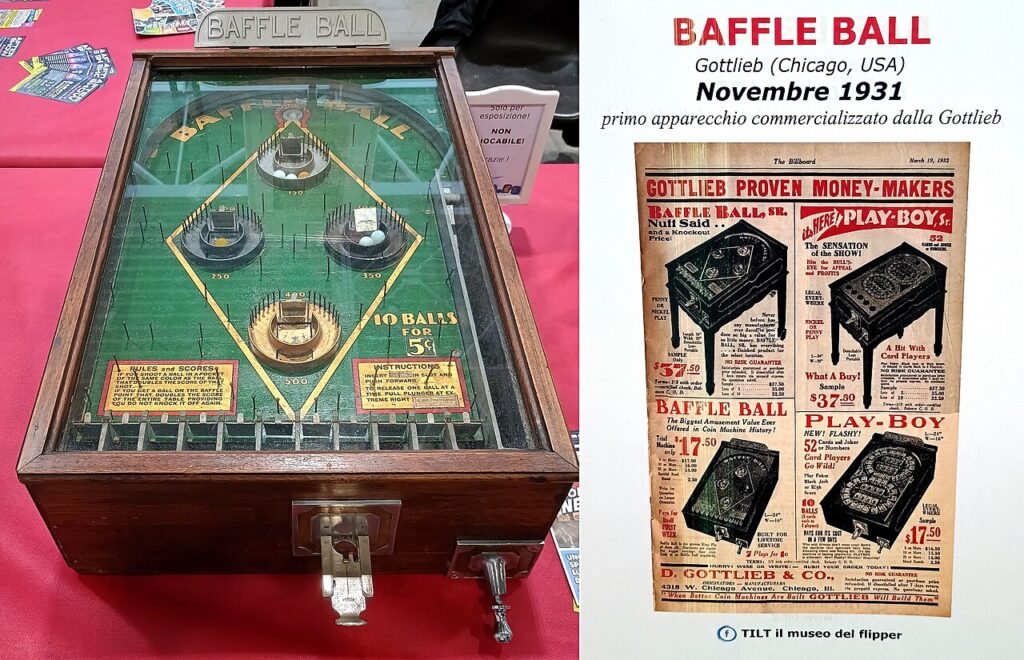
Pinball in the Electrical Era (Include Gambling and Tilting to Cheat)
1933 finally saw the implementation of electricity in pinball machines. In order to add more excitement and dramatic flair to the game, manufacturers implemented new features such as bells, chimes, buzzers, flashing lights and electrified scoring bumpers, all of which became staples for future iterations. On top of that, the playfield and backglasses on the machines provided artists hired by pinball manufacturers blank canvases that they could fill with stunning visuals and beautiful artwork, which often centered on trends popular at the time, fairy tales, industry, and attractive young women obviously meant to appeal to the male player base.
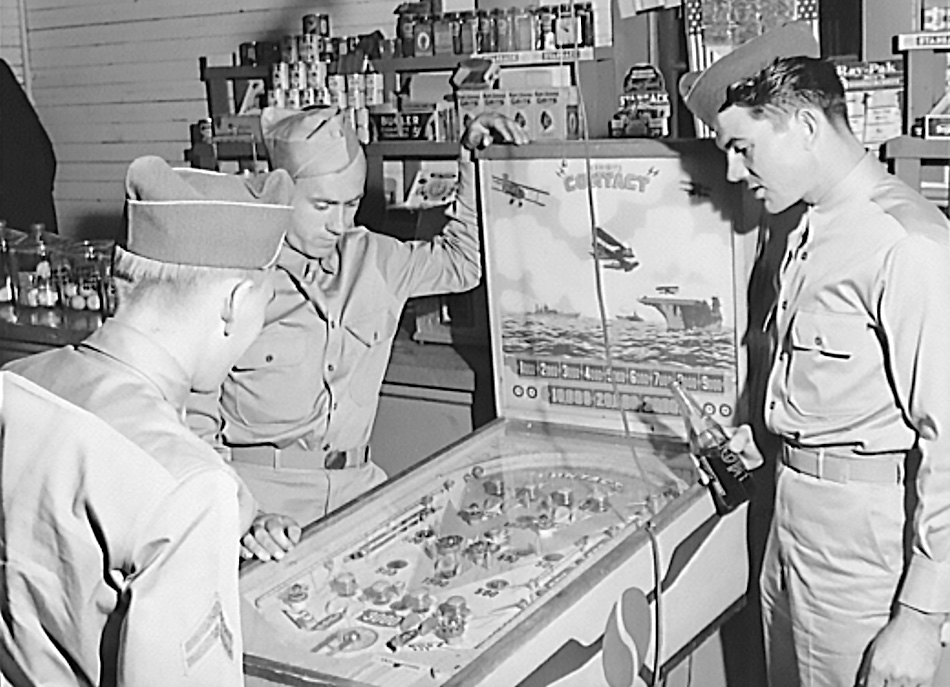
During this time, nearly 150 companies manufactured pinball machines, most of them located in Chicago. In spite of the sadness of the Great Depression, pinball’s popularity only seemed to soar, providing people with an inexpensive joy. To add more incentive, many operators offered fun little prizes for those who could achieve high scores. This, however, encouraged many players to cheat, usually by shaking the machine. The solution to this came in the form of the tilt mechanism, invented by Harry Williams, in 1935, which was able to detect when the machine was being shaken a bit too hard. Other improvements such as free replays were also added.
Flippers
Though pinball saw a decline in popularity during World War II, it bounced back big time after D. Gottlieb & Co. invented the flipper in 1947. Now no longer a game left up to chance, the flipper finally made pinball a game of skill, allowing players to control the direction of the ball and earn as many points as possible. It was first seen in Gottlieb’s Humpty Dumpty, though it required three pairs of flippers to function. Triple Action was the first to feature two flippers at the bottom, though unlike modern machines, these flippers faced outward. Just 21 in 1950 was the first to feature dual-inward-facing-flippers, however, they were much farther apart than modern machines. That same year, Gottlieb released Spot Bowler, the first pinball machine to at last feature inward-facing flippers that were close together.
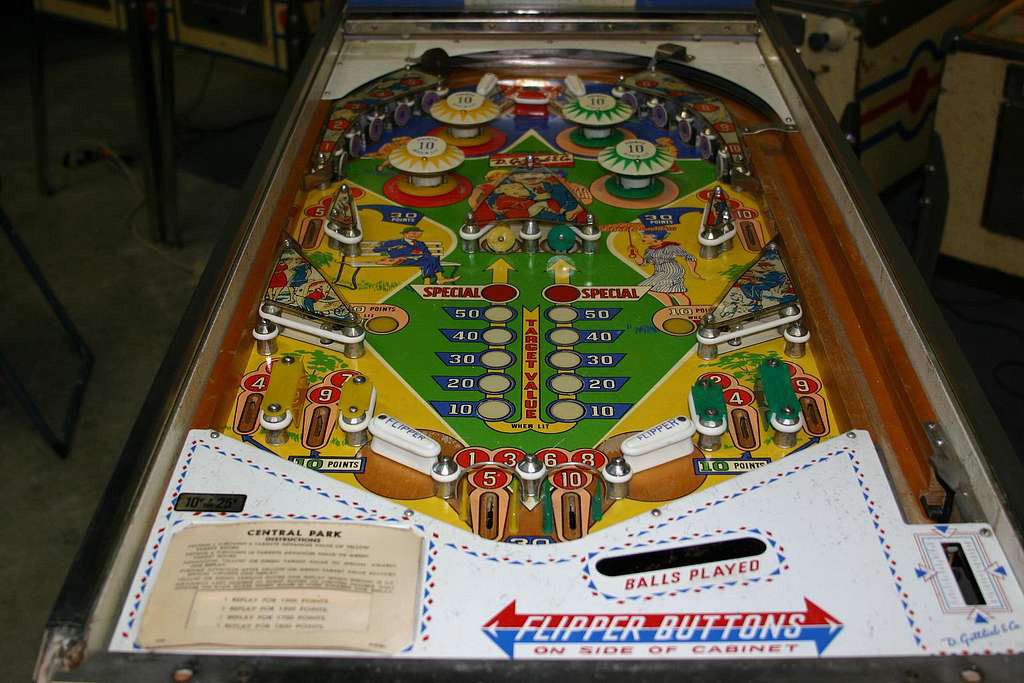
That Time Pinball was Banned
Fun fact: Despite the immense popularity of pinball throughout the 40s and 50s, it was actually illegal to play in some areas during that time. As we know, before the invention of the flipper, pinball was a game of chance. This often led to people betting on the outcome of games, thus leading to pinball being declared a form of gambling by the state of New York in 1942. The police raided many public spaces, collected thousands of machines, and in some cases, smashed those machines to bits in front of the press. The ban remained in place even when the flipper was invented, but was eventually overturned in 1976 when journalist, pinball designer, and professional player Roger Sharpe proved that pinball was a game of skill in a Manhattan court.
Solid-State and the Decline of Pinball
The introduction of microprocessors in the 1970s saw pinball enter the realm of electronic, or solid-state, gaming. No longer limited by old electromagnetic relays and scoring reels, these cutting-edge machines gained new power from circuit boards and digital displays. Pinball saw yet another resurgence, as this new technology allowed games to feature different and more complex rules and digital sound effects.
This new resurgence, however, did not last. At the same time, video games arose as the dominant force in arcades. On top of the sheer entertainment value they brought with their wide variety of options, video games were also easier to run and maintain, and less prone to issues. Over time, pinball began to gradually be phased out in favor of these new video games. Once dominant pinball manufacturers, such as Gottlieb & Co. and Bally and Williams, began to fall one after another. By 2002, the only primary manufacturer of pinball machines left was Stern Pinball.
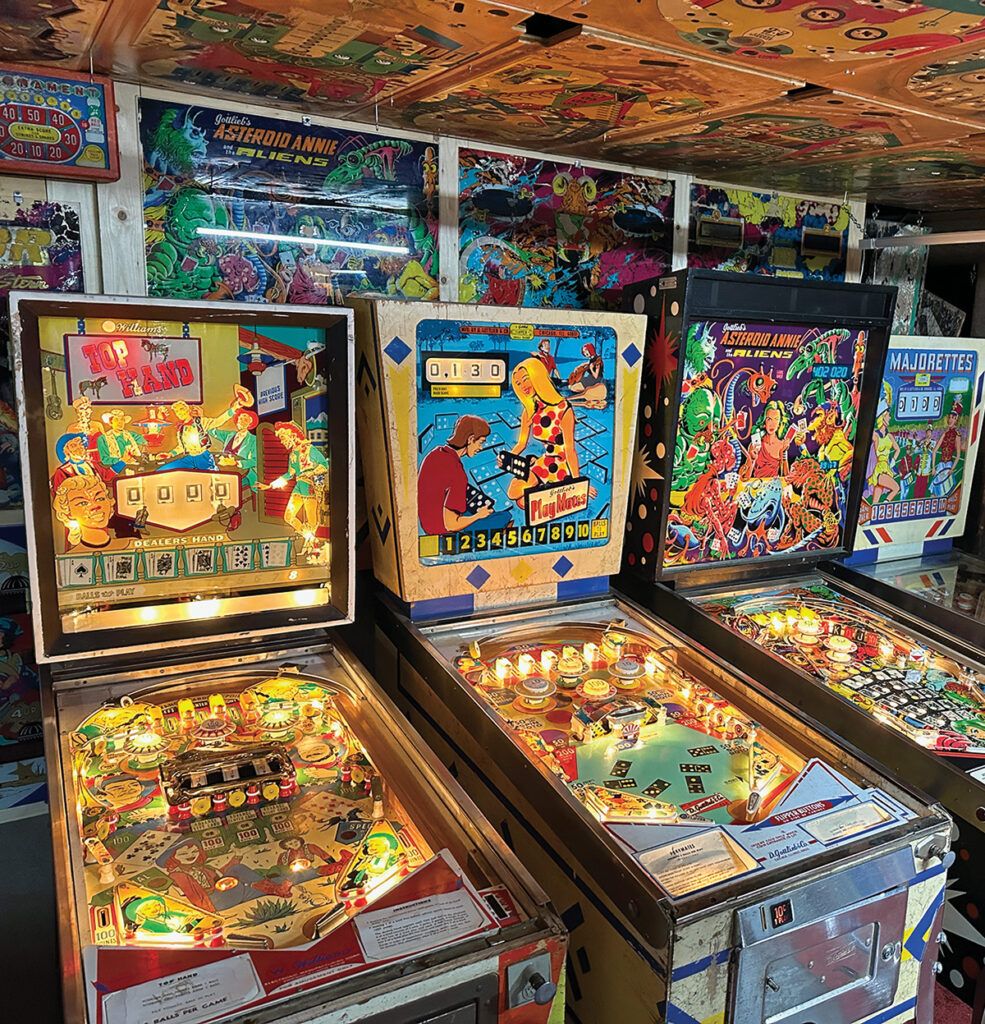
Revival
Do not fret, however, as pinball has been making a stunning comeback. Though many big names closed down in the 90s, plenty of small upstart companies appeared in the 2000s. Stern Pinball, Jersey Jack Pinball, and other companies like American Pinball began innovating and producing more and more fun games. If you’ve ever walked into an arcade today, you’d likely find that pretty much all the pinball machines are themed to various popular media, including Twilight Zone, Ghostbusters, Star Wars, Wizard of Oz and plenty more. These days, pinball can even be seen outside of the mechanical machines, as there’s plenty of pinball video games of various popular media. Video game enthusiasts have also enjoyed Kirby’s Pinball, Pokemon Pinball, Mario Pinball Land, Sonic Pinball, and so many more.
Pinball is still a very popular game and it’s clear to see why. It’s fun, addictive, social, and tactical. Players can play for fun or even against each other. If you’re really competitive, you can even enter full-on pinball tournaments! Whether you’re young or old, as long as there is an arcade nearby, anyone can enjoy the thrill of pinball.
This post was contributed by Max McKamey, BA History, West Chester University.
See more photos of vintage pinball machines in our 2026 Vintage Pinball Deluxe Calendar, featuring 13 frame-ready prints of pinball machines from the collection of Marky Hamilton, accompanied by commentary.

